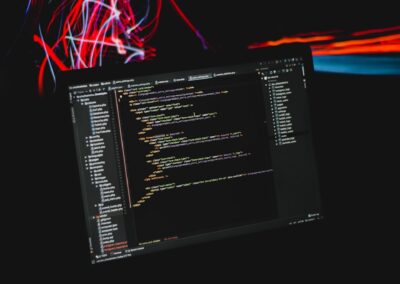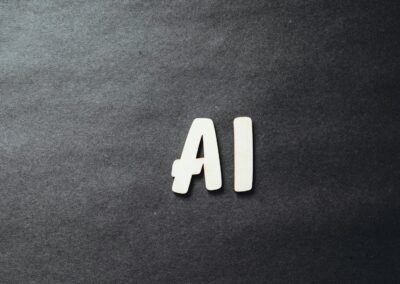Addressing the Complexities of AI Integration in Cybersecurity
Understanding the Role of AI and Machine Learning in Cybersecurity
The integration of AI and machine learning models in cybersecurity has revolutionized how organizations detect, respond to, and mitigate threats. These technologies offer unparalleled capabilities in identifying patterns, predicting potential attacks, and automating responses, thereby enhancing the overall security posture of businesses. However, developing and deploying these advanced models is not without its challenges.
In regions such as Saudi Arabia, the UAE, Riyadh, and Dubai, where the digital transformation is rapidly advancing, the need for robust cybersecurity measures is paramount. Business executives, mid-level managers, and entrepreneurs must understand the complexities involved in harnessing AI for cybersecurity to ensure the protection of their digital assets and infrastructure.
AI and machine learning models require vast amounts of data to function effectively. This data is used to train the algorithms to recognize and predict threats. The challenge lies in acquiring high-quality, labeled datasets that accurately represent the diverse range of cyber threats. Moreover, the dynamic nature of cyber threats means that these models must continuously learn and adapt, which requires ongoing data collection and processing.
Data Quality and Availability
One of the primary challenges in developing AI and machine learning models for cybersecurity is ensuring the quality and availability of data. High-quality data is crucial for training models to accurately detect and respond to threats. However, obtaining such data can be difficult due to privacy concerns, the sensitive nature of cybersecurity information, and the need for extensive labeling and preprocessing.
In the context of Saudi Arabia and the UAE, where regulations on data privacy and protection are stringent, businesses must navigate these legal frameworks to access the necessary data. This requires a strategic approach that balances the need for data with compliance to local regulations. Additionally, organizations must invest in technologies and processes that ensure the data used is clean, relevant, and representative of the evolving threat landscape.
Data availability is another significant hurdle. Cyber threats are constantly changing, and models must be trained on up-to-date data to remain effective. This necessitates continuous data collection and integration from various sources, including threat intelligence platforms, network logs, and user behavior analytics. Ensuring a steady stream of relevant data is essential for maintaining the accuracy and reliability of AI-driven cybersecurity solutions.
Model Training and Adaptation
Training AI and machine learning models for cybersecurity applications involves several complexities. These models must be able to differentiate between normal and malicious activities, which requires extensive training on diverse datasets. The challenge is to create models that are both precise and generalizable, capable of detecting known threats and anticipating new, unseen ones.
The rapid pace of technological advancement in Saudi Arabia, the UAE, Riyadh, and Dubai means that cyber threats are also evolving quickly. This dynamic environment necessitates models that can adapt in real-time, learning from new data and adjusting their algorithms accordingly. Continuous learning and adaptation are critical, but they also pose challenges in terms of computational resources and the potential for model drift, where the performance of the model degrades over time due to changes in the data.
Moreover, the integration of AI models into existing cybersecurity frameworks requires careful consideration. Organizations must ensure that these models complement their existing tools and processes without introducing vulnerabilities. This involves rigorous testing, validation, and ongoing monitoring to detect and address any issues that may arise during deployment.
Strategic Deployment and Operational Challenges
Integration with Existing Cybersecurity Infrastructure
Deploying AI and machine learning models in cybersecurity involves more than just developing the models; it requires seamless integration with existing infrastructure. This integration can be complex, as it must ensure compatibility with various systems and processes already in place. In regions like Riyadh and Dubai, where businesses are rapidly adopting advanced technologies, this challenge is particularly pronounced.
Organizations must assess their current cybersecurity frameworks and identify areas where AI can provide the most value. This involves a thorough understanding of the existing security measures, potential gaps, and how AI models can enhance overall protection. Additionally, integration should focus on ensuring interoperability between AI-driven solutions and traditional security tools, facilitating a cohesive and comprehensive security strategy.
Effective integration also requires collaboration between different departments and stakeholders within the organization. Business leaders, IT teams, and security professionals must work together to align their goals and ensure that AI models are implemented in a way that supports the organization’s broader cybersecurity objectives. This collaborative approach is essential for overcoming the technical and operational challenges associated with AI deployment.
Ensuring Model Robustness and Reliability
The robustness and reliability of AI and machine learning models are critical for their effectiveness in cybersecurity applications. These models must be resilient to adversarial attacks, where malicious actors attempt to deceive the AI system by manipulating the input data. Ensuring robustness involves implementing techniques such as adversarial training, which exposes the model to potential attacks during the training phase, allowing it to learn how to defend against them.
Reliability is another key consideration. AI models must consistently perform at a high level, accurately detecting threats without generating excessive false positives or negatives. This requires continuous monitoring and evaluation, as well as regular updates to the models to incorporate new threat intelligence and address any identified weaknesses. In dynamic environments like Saudi Arabia and the UAE, where cyber threats are constantly evolving, maintaining model reliability is an ongoing challenge.
Organizations must also consider the ethical implications of AI in cybersecurity. Ensuring that AI-driven solutions are transparent, explainable, and free from biases is essential for building trust and confidence among stakeholders. This involves adopting best practices in AI ethics and governance, as well as engaging with regulatory bodies to ensure compliance with local and international standards.
Conclusion: Embracing AI for a Secure Future
In conclusion, the development and deployment of AI and machine learning models for cybersecurity present both significant opportunities and challenges. For business executives, mid-level managers, and entrepreneurs in regions like Saudi Arabia, the UAE, Riyadh, and Dubai, understanding these challenges and implementing strategies to overcome them is crucial for enhancing their cybersecurity posture.
By addressing issues related to data quality and availability, ensuring effective model training and adaptation, and focusing on robust and reliable deployment, organizations can harness the power of AI to protect against evolving cyber threats. Collaboration, continuous learning, and a commitment to ethical AI practices will be key to successfully integrating these advanced technologies into the cybersecurity landscape.
As cyber threats continue to grow in complexity and frequency, leveraging AI and machine learning models will be essential for staying ahead of attackers and ensuring the security and resilience of digital infrastructures. Embracing these technologies with a strategic and informed approach will empower organizations to achieve greater levels of protection and business success in an increasingly digital world.
#Cybersecurity #AI #MachineLearning #ThreatDetection #SaudiArabia #UAE #Riyadh #Dubai #BusinessSuccess #LeadershipSkills #ProjectManagement























